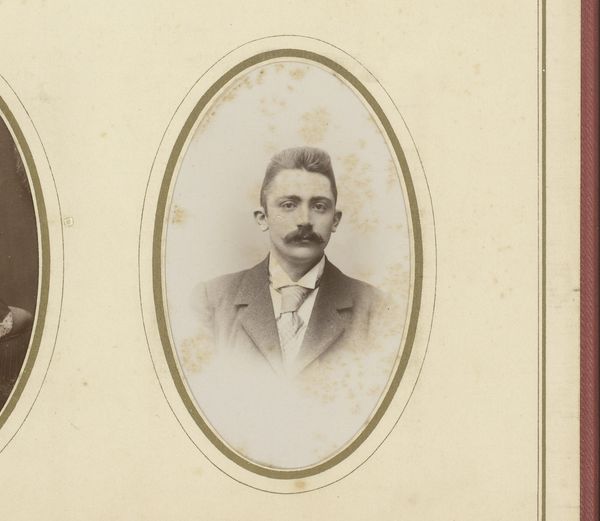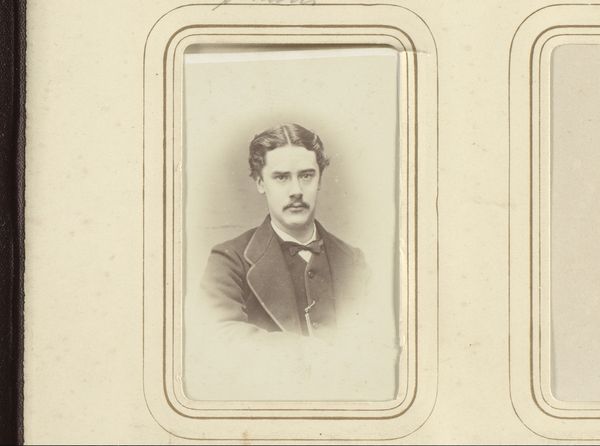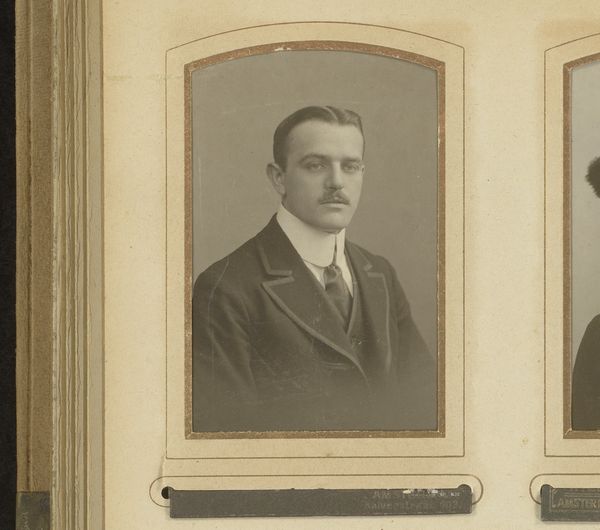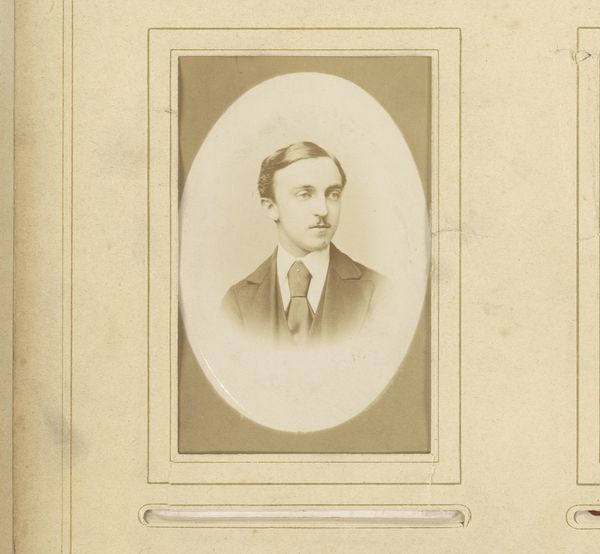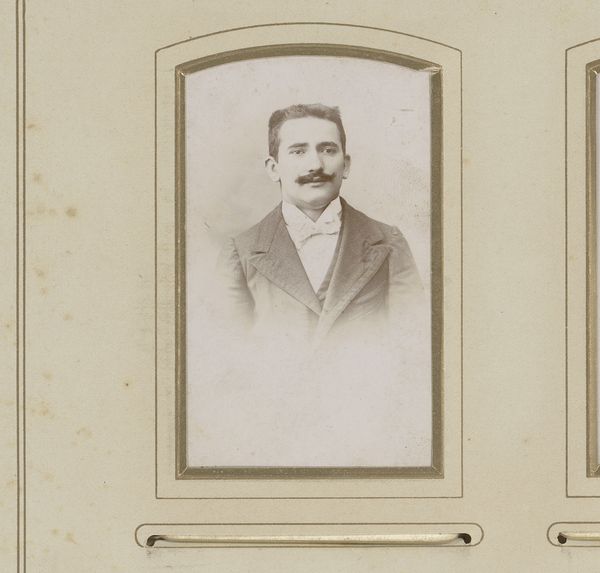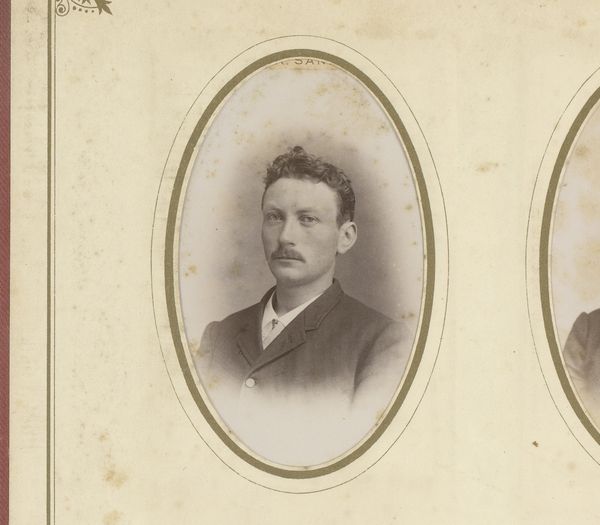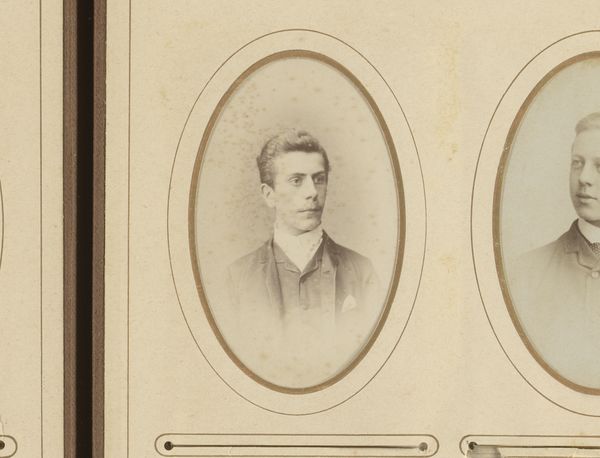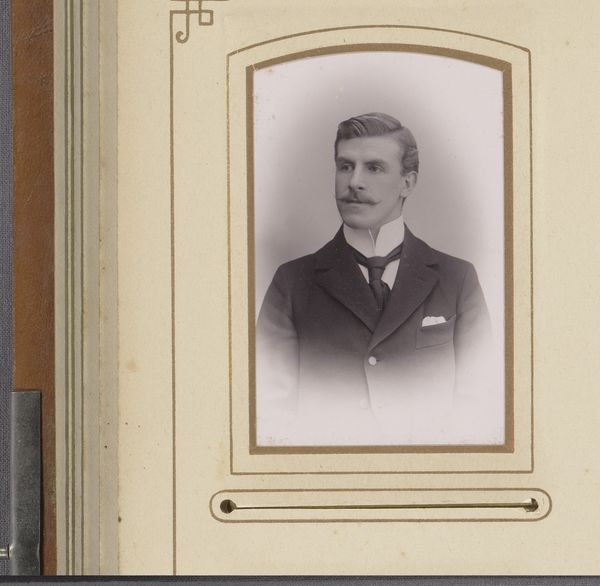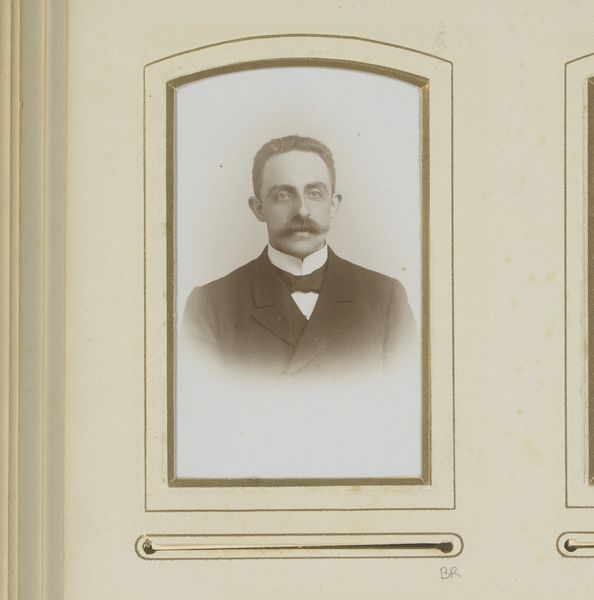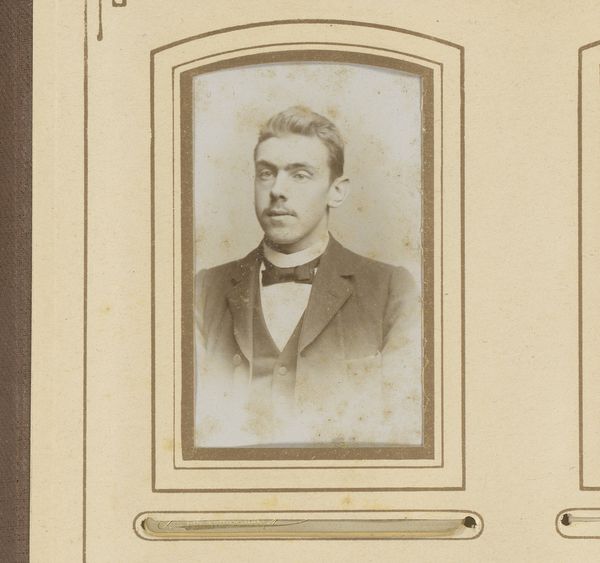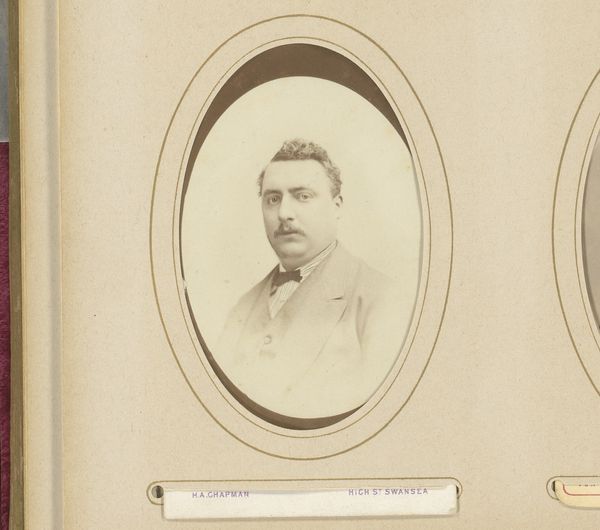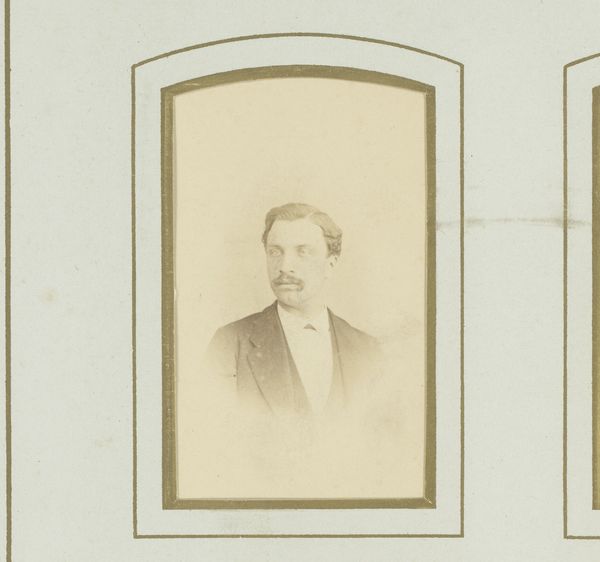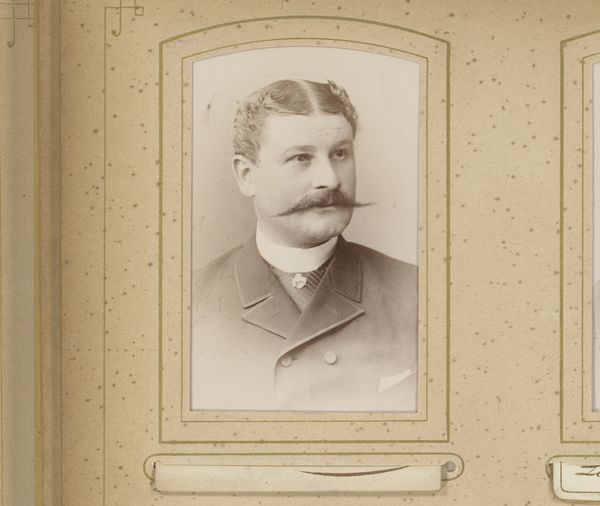
photography
#
portrait
#
photography
Dimensions: height 84 mm, width 51 mm
Copyright: Rijks Museum: Open Domain
Curator: This intriguing photograph is titled "Portret van een man met snor en stropdas"—or "Portrait of a Man with a Moustache and Tie"—and we estimate it was taken sometime between 1880 and 1915. It is attributed to Camillus Franciscus van der Aa. Editor: There's a formality to it, of course, but a subdued one. The soft focus and sepia tones create a dreamlike quality. I am wondering about class and access to photography during that era. Curator: That's an excellent question to raise. The rise of photography in this period did offer new ways to visualize and document status and identity. Portraits were no longer exclusively the domain of the wealthy who could afford painted likenesses, although access was still class-based. Editor: It's the subject’s expression I find compelling. He seems both confident and slightly melancholic. His attire—the tie, the suit—speaks of a certain social expectation, almost a performance. Does his identity, his internal self, align with this public presentation, or is there a tension there? What about his moustache? The moustache was a huge identifier of masculine identity at this time. Curator: Exactly! His very carefully groomed mustache broadcasts a specific ideal of masculinity of the time. But look closely: his gaze doesn't entirely match that assertive image. The studio portrait itself became a carefully constructed, performative space for the creation and affirmation of identity in the late 19th century. These images are simultaneously personal records and public declarations of social belonging. Editor: And the photograph's function as a historical document shifts when we begin to acknowledge the layers of constructed identity embedded within it. It becomes more than just a face. The context of gender and class—and really, the performance—becomes foregrounded, rather than lost. Curator: Yes. Understanding the social conventions that shaped photographic portraiture in this period lets us engage critically with questions of representation and power. We've both offered important contexts to further question how an artwork functions publicly. Editor: For me, exploring those kinds of intersections—identity, power, representation—allows the portrait to really resonate with the complexities of contemporary concerns.
Comments
No comments
Be the first to comment and join the conversation on the ultimate creative platform.
